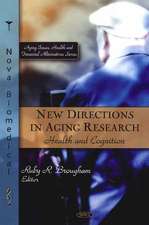Skin Aging, Free Radicals & Antioxidants
Editat de Borut Poljsaken Limba Engleză Hardback – 22 mai 2012
Preț: 1575.11 lei
Preț vechi: 2156.66 lei
-27% Nou
Puncte Express: 2363
Preț estimativ în valută:
301.39€ • 314.68$ • 249.44£
301.39€ • 314.68$ • 249.44£
Carte disponibilă
Livrare economică 15-29 martie
Preluare comenzi: 021 569.72.76
Specificații
ISBN-13: 9781613247181
ISBN-10: 1613247184
Pagini: 409
Ilustrații: Illustrations
Dimensiuni: 182 x 259 x 27 mm
Greutate: 0.93 kg
Ediția:New.
Editura: Nova Science Publishers Inc
ISBN-10: 1613247184
Pagini: 409
Ilustrații: Illustrations
Dimensiuni: 182 x 259 x 27 mm
Greutate: 0.93 kg
Ediția:New.
Editura: Nova Science Publishers Inc
Cuprins
Introduction & description of the problem; What is aging?; The role of oxidative stress in general aging process; Basic information about skin; General overview of skin aging: extrinsic (external) & intrinsic (free radical mediated internal) factors; Mechanisms of skin aging, UV & Photoaging; Skin, free radicals & antioxidants; General overview of antioxidative protection; Antioxidant prevention of damage induced by extrinsic factors; Can antioxidants as dietary supplements offer appropriate protection against ROS-induced damage?; Methodology for the detection of oxidative state in biological systems; Alternative Methods of Decreasing Oxidative Stress & Retarding Aging Process; The role of telomeres in skin aging; Hormones & skin aging; Topical treatment of Skin Aging; Skin Curative approaches; Conclusion; Index.

























